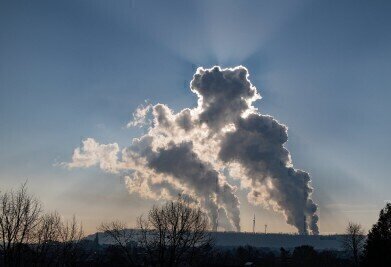Air Monitoring
What Exactly Is a Combustion Plant?
Mar 19 2021
A combustion plant is defined as any piece of equipment or hardware which oxidises a fuel source to harvest the energy that is created as a result. In layman’s terms, this generally refers to a power plant which burns a material to generate energy, but can also include other sites as well. Fossil fuels often make up the feedstock in these types of facilities, with coal-fired, gas-fired and oil-fired power stations some of the more common examples.
There are tens of thousands of these types of plants located in the UK, all of which generate emissions that can be harmful in terms of the pollution they create and the contributions towards climate change that they incur. For that reason, they are regulated by appropriate different directives and standards, depending upon the size of the facility and the amount of energy they process.
Small combustion plants
Any facility which has a thermal input of below 1 Megawatt thermal (1MWth) is deemed a small combustion plant. The emissions generated by these plants are regulated by the Ecodesign Directive, which was drafted in 2005, adopted in 2008 and revised in 2009. This directive also covers all smaller appliances which are commonly found in homes and businesses throughout the UK, including refrigerators, boilers, televisions and even light bulbs.
Medium combustion plants
A medium combustion plant (or MCP) is defined as any facility which has a thermal input of between 1MWth and 50MWth. There are currently over 140,000 such facilities in the EU and an estimated 35,000 MCPs in the UK, all of which are used for various purposes including electricity generation, heating, cooling and industrial applications. The emissions generated by MCPs are governed by the Medium Combustion Plant Directive (MCPD), which regulates the levels of nitrogen oxides (NOx), sulphur dioxide (SO2) and dust that a plant is legally allowed to emit.
Large combustion plants
Large combustion plants (LCPs) are those facilities which have a thermal input of 50MWth and over. These include large-scale fossil fuel- and biomass-fired power stations, as well as refineries which process crude oil to create petroleum and other useful commodities. LCPs are subject to regulation by the Industrial Emissions Directive (IED), which uses Best Available Techniques (BATs) to arrive at BAT-associated emissions levels (BAT-AELs). These thresholds are included in the BAT Reference document – otherwise known as BREF – which set out the limits that LCPs must adhere to and the monitoring mechanisms they must put in place to demonstrate compliance. The article The European Union’s Large Combustion Plant BREF – Monitoring and Compliance Requirements gives more information on exactly how this legislation works.
Digital Edition
IET 34.2 March 2024
April 2024
Gas Detection - Biogas batch fermentation system for laboratory use with automatic gas analysis in real time Water/Wastewater - Upcycling sensors for sustainable nature management - Prist...
View all digital editions
Events
Apr 30 2024 Melbourne, Australia
Apr 30 2024 Birmingham, UK
May 03 2024 Seoul, South Korea
May 05 2024 Seville, Spain
May 06 2024 Minneapolis, MN, USA


















